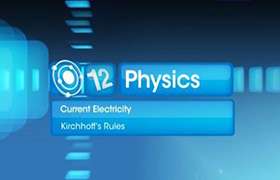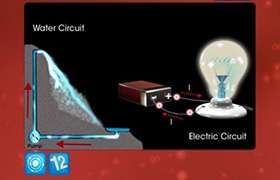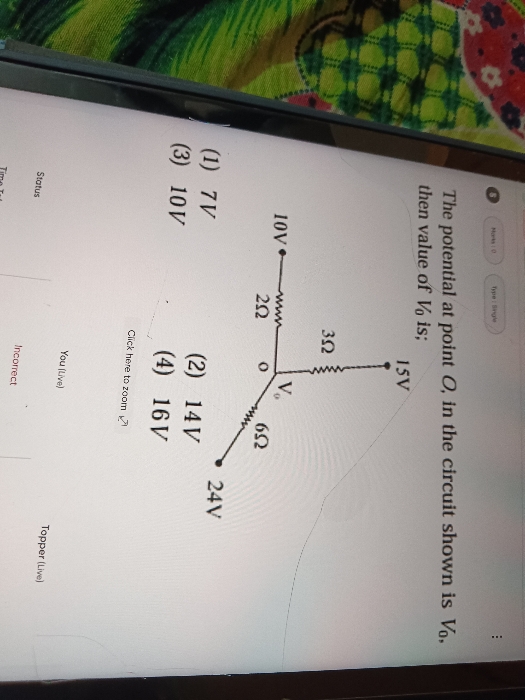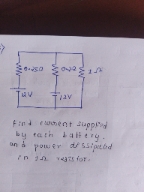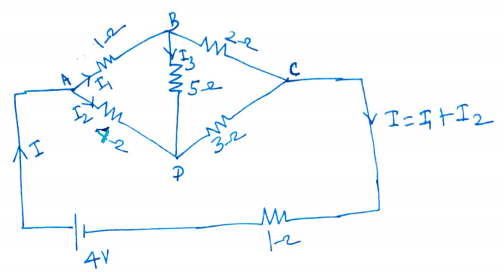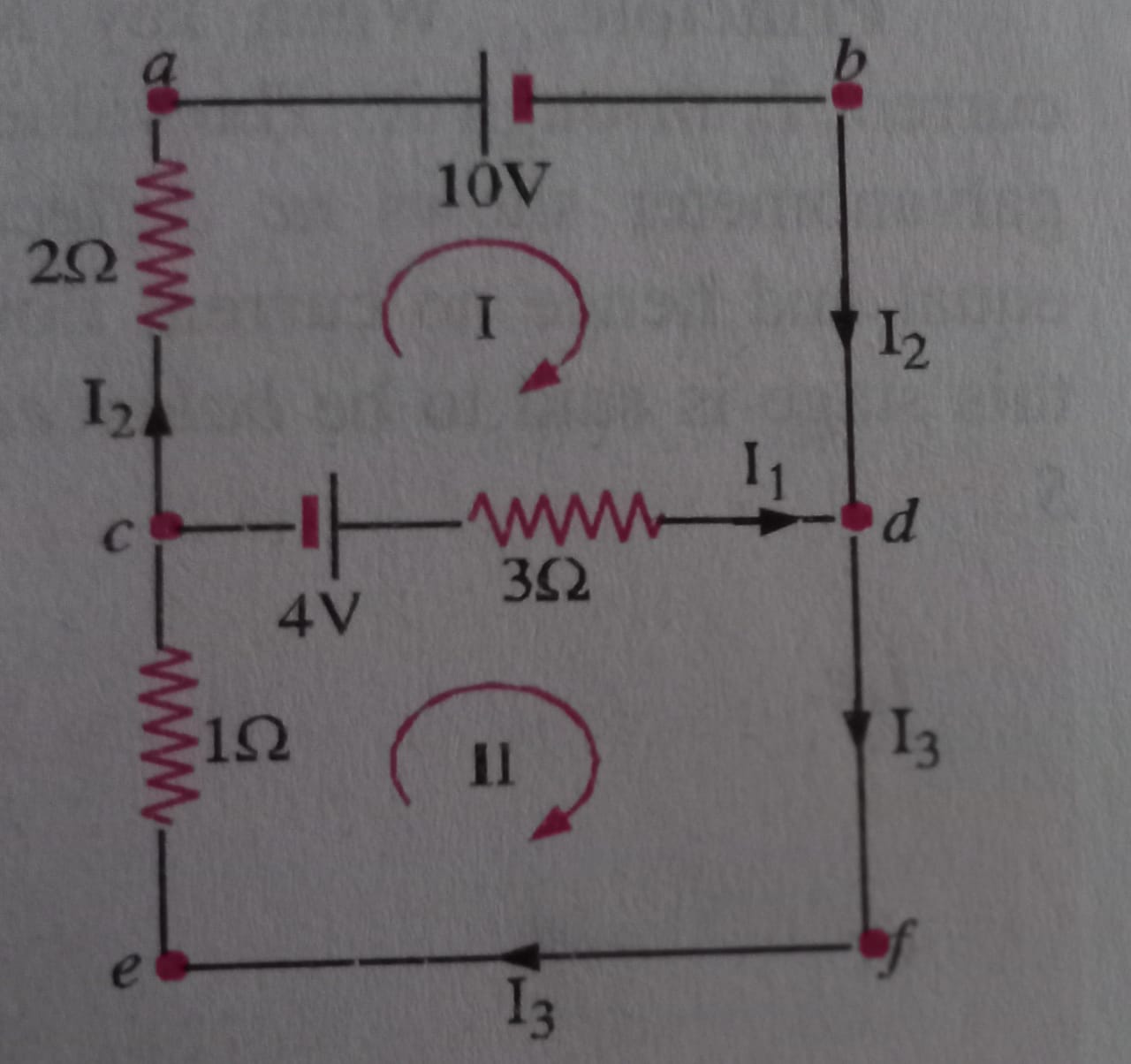CBSE Class 12-science Answered
Find the current in each resistor
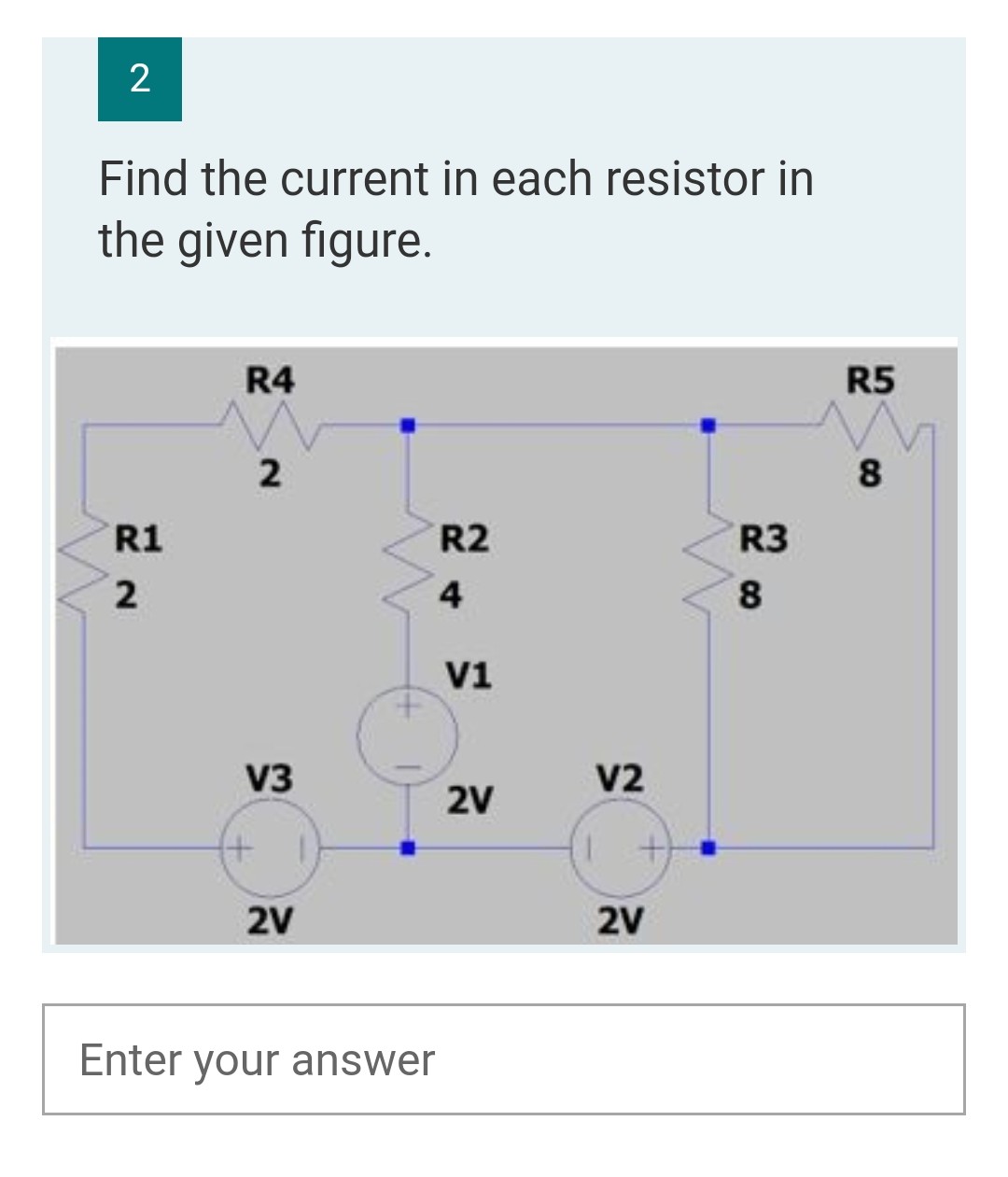
Asked by najeeb.razvi | 09 Aug, 2021, 06:45: PM
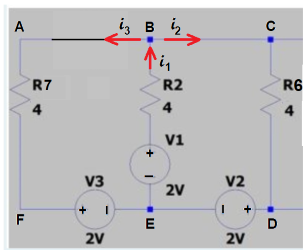
In the given circuit R1 and R4 are in series .
Hence Equivalent resistance R7 = 4Ω replaces resistors R1 and R4 in the circuit shown above.
Similarly , in the given circuit, R3 and R5 are in parallel.
Hence Equivalent resistance R6 = 4Ω replaces resistors R3 and R5 in the circuit shown above.
Let us assume the current distribution as shown in figure.
If we apply Kirchoff's voltage law to the loop ABEFA , we get
4  1 + 4
1 + 4  3 + 2 = 2 or
3 + 2 = 2 or  1 = -
1 = -  3 ............................ (1)
3 ............................ (1)
 1 + 4
1 + 4  3 + 2 = 2 or
3 + 2 = 2 or  1 = -
1 = -  3 ............................ (1)
3 ............................ (1)If we apply Kirchoff's voltage law to the loop BCDEB , we get
4  1 + 4
1 + 4  2 + 2 = 2 or
2 + 2 = 2 or  1 = -
1 = -  2 ...........................(2)
2 ...........................(2)
 1 + 4
1 + 4  2 + 2 = 2 or
2 + 2 = 2 or  1 = -
1 = -  2 ...........................(2)
2 ...........................(2) At node B , if we apply Kirchoff's current law , we get  1 =
1 =  2 +
2 +  3 ...............................(3)
3 ...............................(3)
 1 =
1 =  2 +
2 +  3 ...............................(3)
3 ...............................(3)From equations (1), (2) and (3) , we get ,  1 =
1 =  2 =
2 =  3 = 0
3 = 0
 1 =
1 =  2 =
2 =  3 = 0
3 = 0Hence current through all resistors is zero
Answered by Thiyagarajan K | 09 Aug, 2021, 08:33: PM
Concept Videos
CBSE 12-science - Physics
Asked by mailtoanjalip2005 | 16 Mar, 2024, 08:22: PM
CBSE 12-science - Physics
Asked by nikhilsai2616 | 19 Nov, 2023, 01:05: AM
CBSE 12-science - Physics
Asked by snehashiragannavar773 | 21 Oct, 2023, 02:38: PM
CBSE 12-science - Physics
Asked by komalbrar0987 | 17 May, 2023, 06:15: PM
CBSE 12-science - Physics
Asked by nudratnigar | 10 May, 2022, 12:02: PM
CBSE 12-science - Physics
Asked by divyabharti14042004 | 18 Jan, 2022, 02:52: PM
CBSE 12-science - Physics
Asked by carthi66 | 11 Nov, 2021, 02:49: PM
CBSE 12-science - Physics
Asked by umeshts142 | 13 Oct, 2021, 08:14: AM
CBSE 12-science - Physics
Asked by najeeb.razvi | 09 Aug, 2021, 06:45: PM
CBSE 12-science - Physics
Asked by hitanshu92 | 09 Jul, 2021, 10:22: PM

